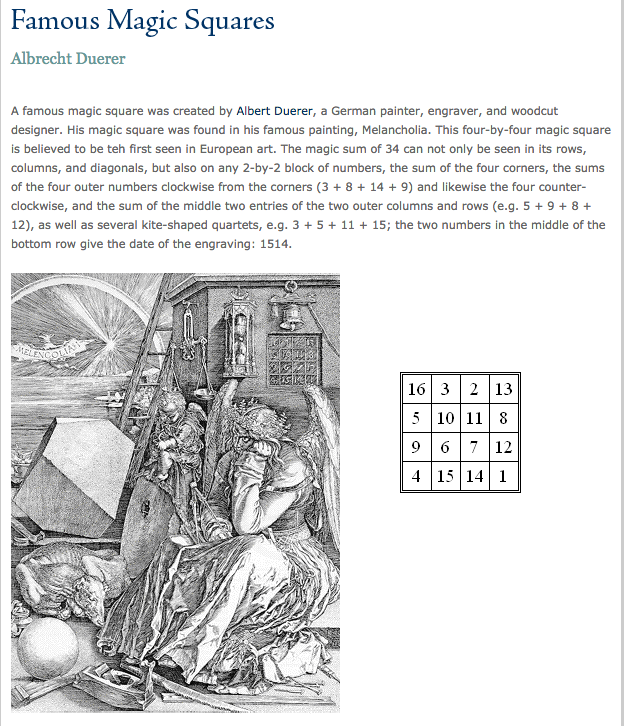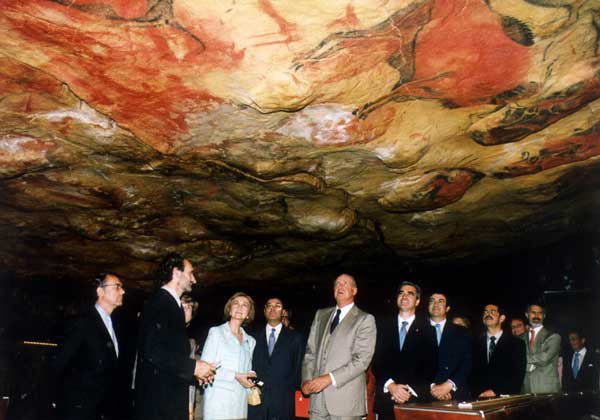The Magic Square In Antoni Gaudi's Sagrada Familia
Albrecht Duerer in his woodcut introduced the MAGIC SQUARE.
The sum total of the numbers in each parallel column adds up to 34.
The sum total of the numbers in each vertical column adds up to 34.
The sum total of the numbers in the diagonals adds up to 34.
The sum total of the numbers in the four corners: 16 + 4 + 13 + 1 adds up to 34.
The sum of the two numbers between the corners: 3 + 2 + 15 + 14;
5 + 9 + 8 + 12...each set adds up to 34.
The sum of the four numbers in the centre 10 + 11 + 7 + 6 makes 34.
In Sagrada Familia, Antoni Gaudi uses the MAGIC SQUARE above.
WHY DID ANTONI USE THE MAGIC SQUARE IN THIS PARTICULAR PLACE?
Perhaps to express his faith in the traditional teaching that nothing happens by accident; that the Creator of all that exists has order embedded at the core of its existence.
The Magic Square as a symbol then teaches such a subtle lesson!
The close-up shows the horizontal, vertical and diagonal numbers adding up to make 33.
The numbers at the end of the corners of the square : 1 + 4 +15 + 13 add up to make 33.
The sum of the two numbers between the corners: 14 + 14 + 2 + 3;
11 + 8 + 9 + 5...each set adds up to 33.
The sum of the four numbers in the centre 7 + 6 + 10 + 10 makes 33.
Thirty-three is the age when the Christ died.
The sculpture depicts Judas kissing the Christ to help the capturers identify him to stand trial for sedition.
This is another symbol used to underscore the paradoxes in the story of salvation: good is bad, bad is good; the weak is strong, the strong weak; loose your life to save it...save it and you loose it.
A mosaic portrait of Antoni Gaudi






Comments
Post a Comment